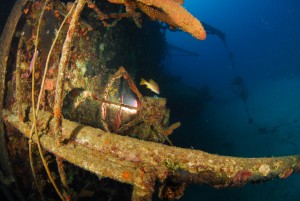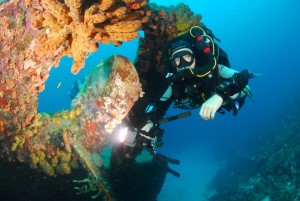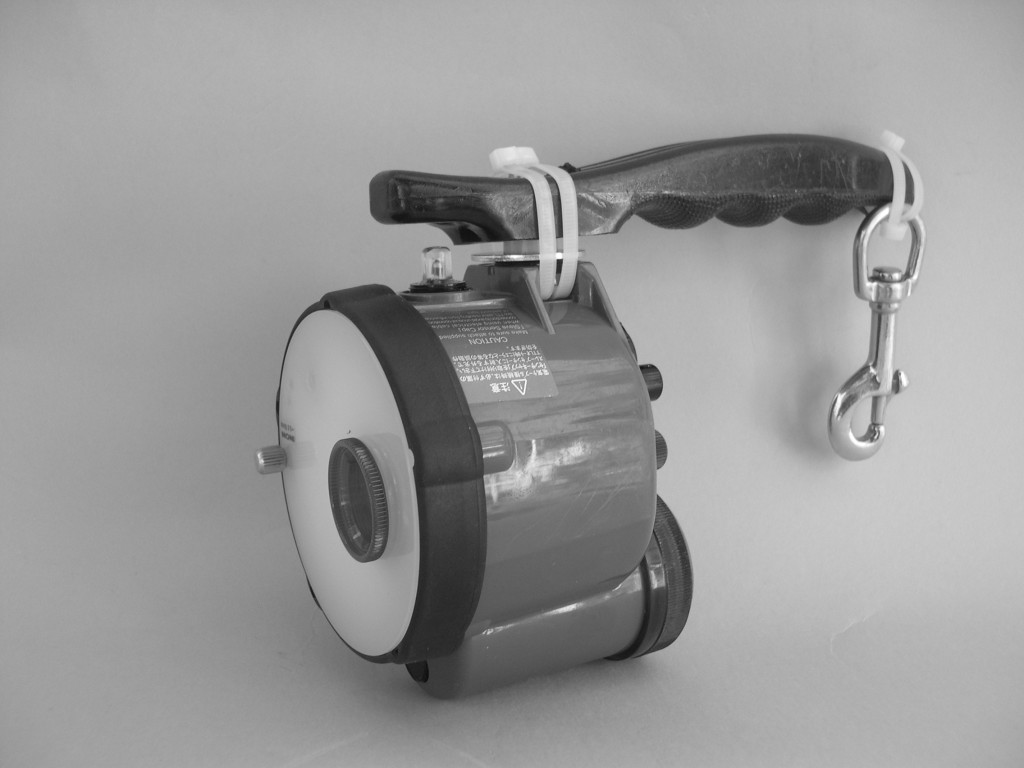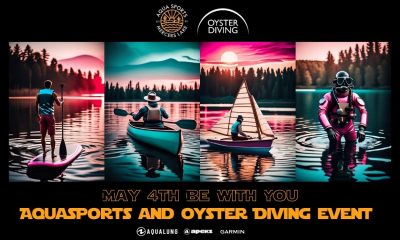News
The Tech Photographer
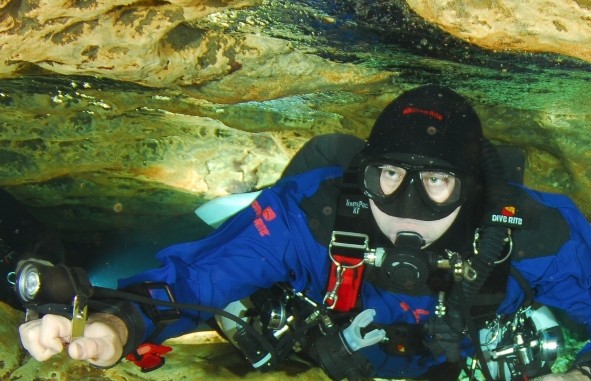
Many of Today’s divers are engaged in “technical “diving. Simply stated, “any dive in which a diver cannot surface immediately and directly to the surface, is performing a tech dive”. It may be necessary to switch to different breathing mixtures or work with computers that need to have gas changes accomplished during hang times. CCR Divers are always aware and monitoring the PO2 within the loop. These factors increase work load, distractions and can create stress at varying individual levels. Carrying the extra load of double tanks and stage bottles or bail out bottles for CCR divers causes even more drag. Now add a camera into the whole mix. Before you decide just to “grab and go” do not bring a camera into any situation that you have not encountered before; plan your dive carefully.
Carrying a camera can be considered task loading on just about any dive. Why? It’s simple. The diver has just lost the use of one hand. Access to all equipment will have to be accomplished without damaging that expensive piece of photo gear. It may be necessary to cut or remove a piece of monofiliment. It is simple enough to do when both hands are free; however, if the cutting shears are placed where only your right hand can reach them and the camera is now occupying this hand? How do you cut the line in a ripping current when the left hand is now holding you in position? What do you do? Consider reconfiguring your equipment, and packing a second cutting tool.
Photographers occasionally, however improperly, disregard their planned dive profile or run low on air/gas. The following statements are commonly used for justification. “I had to hang because I wanted the shot and had to wait for the right conditions,” or “ I wasn’t paying enough attention to my air supply because I was to busy taking pictures.” Photography is never an excuse to disregard proper dive safety protocols. Buoyancy control is very important not only for reducing the possibility of silting out the photo but also energy and environmental conservation. A diver that is neutrally buoyant expends less energy and reduces gas consumption. The following areas are just two of the many “tech” situations that a photographer may encounter:
Cave Diving
Diving and exploring the subterranean world of an underwater cave takes special training, skills and equipment. An adequate gas supply or appropriate bailout for CCR divers, backup lights and the necessary reels needed to safely navigate this environment quickly take up all available body space. One hand will be occupied with the primary dive light and the second hand may be needed to pull through a strong current. An inefficient fin technique will only tire the diver, so where does the camera go? First of all, the camera should be left behind until this area has been dived by the photographer beforehand (exploration divers are of a different skill set and take years of preparation). Strobe lighting is essential and multiple strobes are considered standard. Is the cave opening large enough? Sidemount explorers may have to change their approach in order to get the diver and camera through a two-foot wide crack in the earth!
Following a dive plan that has been agreed to will be required if the photographer expects results. After the site has been chosen and a decision made on what subject will be photographed, the divers will have to get into the cave. High flow areas may require modifying techniques. One technique is to allow the diver without the camera to lead the dive. The lead diver can actually deflect part of the strong flow. The photographer will have to stay close behind to take advantage of the flow deflection. An errant kick however can be devastating to a camera system. The photographer will not only have to protect the camera from his dive buddy but maneuver in such a way as to avoid slamming it into the bottom or the cave walls. Once inside it will be necessary to swim with a light and camera system at the same time. Attaching a primary light to the camera system is one technique or using a “Goodman style handle” on the light will allow the diver to hold the camera and light at the same time. Navigating through very tight areas may require reconfiguring equipment and thinking. Sidemount diving has gained much attention of late. In this situation the tanks are moved from the divers back and are mounted along side the body. Air management is even more critical since the entire air supply is not accessible from one regulator. This type of diving will require multiple regulator exchanges during the dive. This configuration should not be attempted without proper training and practice. Placement of camera lanyards must not interfere with regulator access. In this case it may be best to dispense with any lanyard to avoid entanglement with regulator hoses. Multiple strobe systems may not work in tight areas because the strobe arms cannot be extended properly. Large flexible arms may be small enough to negotiate cramped passages. As simple detachable strobe arm system may be a better choice. It is important to have a pre-dive briefing explaining when and how the photo is to be attempted. You may wish to have your buddy carry and position the secondary slave strobe in order to achieve results in tight places. Practice the photo in a simple situation first. Local quarries have easily accessed areas, such as school buses. This will allow planning and practice in a low stress environment. Most digital strobes have sensors that will pick up the primary strobe flash. However it may be necessary to add a sensor cord to help the strobe “see” the primary flash.
Many divers are using Nitrox as a breathing medium and a second gas with a higher percentage of oxygen to assist in decompression. Cave divers leave “deco” bottles at the cave entrance where decompression stops will be done. Some buddy teams work with the photographer allowing his buddy to carry his/her deco gas into the cave while they manage the camera system. It is the photographers’ responsibility to ensure their deco bottle is placed properly and secured.
Wreck Diving
Exploring shipwrecks in deeper water for longer periods of time has become commonplace for the advanced wreck fraternity. Cold-water explorers already know how thick gloves hinder movement and dexterity. Many divers find themselves needing deco stops that will require maintaining proper depth in current or wave action, occasionally both, unlike cave divers that more often than not put a camera down and free up both hands. Wreck divers will be hanging in open water and may have to stay close to or hold onto the anchor line while maintaining neutral buoyancy. Wrist lanyards can be uncomfortable because of the extra weight and drag on the arm. This can be fatiguing and can interfere with gear management. Computers that require manual changes may be difficult to work with unless the camera system is “clipped” off and allows the use of both hands. Accessing a second regulator with one hand holding the anchor line and a camera interfering with the other can turn into a nightmare. CCR divers have a whole set of protocols that require diligence and dexterity. Remember in this situation, neutral buoyancy will be important to maintain a consistent depth for decompression. Having the camera clipped off to a separate ring and a lanyard long enough not to interfere with other equipment is the best solution. Lanyard length is determined while the diver is in the prone horizontal position. Wrist mounted computers tend to work the best, and having the ability to have both hands free on occasion will make the dive more enjoyable.
Selecting the type of camera system that will work for the planned dives are just as important. Housed systems are bulkier to work with in the water and create more drag, therefore more fatigue. Aluminum housings tend to have deeper working ranges than plastic housings. It is best to check with the manufacturer for the maximum working depth of the equipment. Although the camera system may be rated to 200 feet it may impossible to use the housing effectively past 150 feet. Extreme temperature changes can cause fogging inside the housing. The use of a desiccant will alleviate the problem. The attachment clip should be of a style that can be released with one hand and is different that any other clip. After surfacing it would be best to hand the camera system up to someone on the boat.
Working with multiple strobes is not as difficult as it appears. Here are a few tips:
- Exposure is based on the strongest light source. The strobes on the camera will illuminate objects closest to the camera. Slave strobes are considered fill lighting.
- Do not allow the slave strobe to point directly into the camera lens. The bright direct flash at close range WILL affect exposure.
- Provide some type of a handle for your dive buddy to work with, and some type of clip. A strobe handle works but a dedicated handle works best.
- Bright sunlight will affect the slave sensors ability to “see” the primary strobe. Therefore it may require practice in positioning in shallow water.
- Pre-plan the dive but allow for critical thinking. This is a three dimensional dynamic environment; things change.
- Bring a slate and use it! This will save time and make communication clear and quick.
This probably sounds like a lot of work……well, it is! This is the reason that any dive of this nature should be planned out and discussed beforehand. If you don’t know the dive or the gear, leave the camera behind. Work as a team to achieve the best results!
Blogs
TRAVEL BLOG: Jeff Goodman Dives SOMABAY, Part 1

For a week at the end of February I was invited to sample the diving with Orca Dive Club based at the Breakers Diving and Surfing Lodge by courtesy of SOMABAY.
Somabay covers an entire peninsula and is home to several resorts as well as residential compounds. Somabay caters for scuba diving as well as many other sports, including windsurfing, golf, sailing, go-carting, horse riding and many other activities.
All the activities are of a world-class standard and any or all of these can be booked directly from The Breakers.
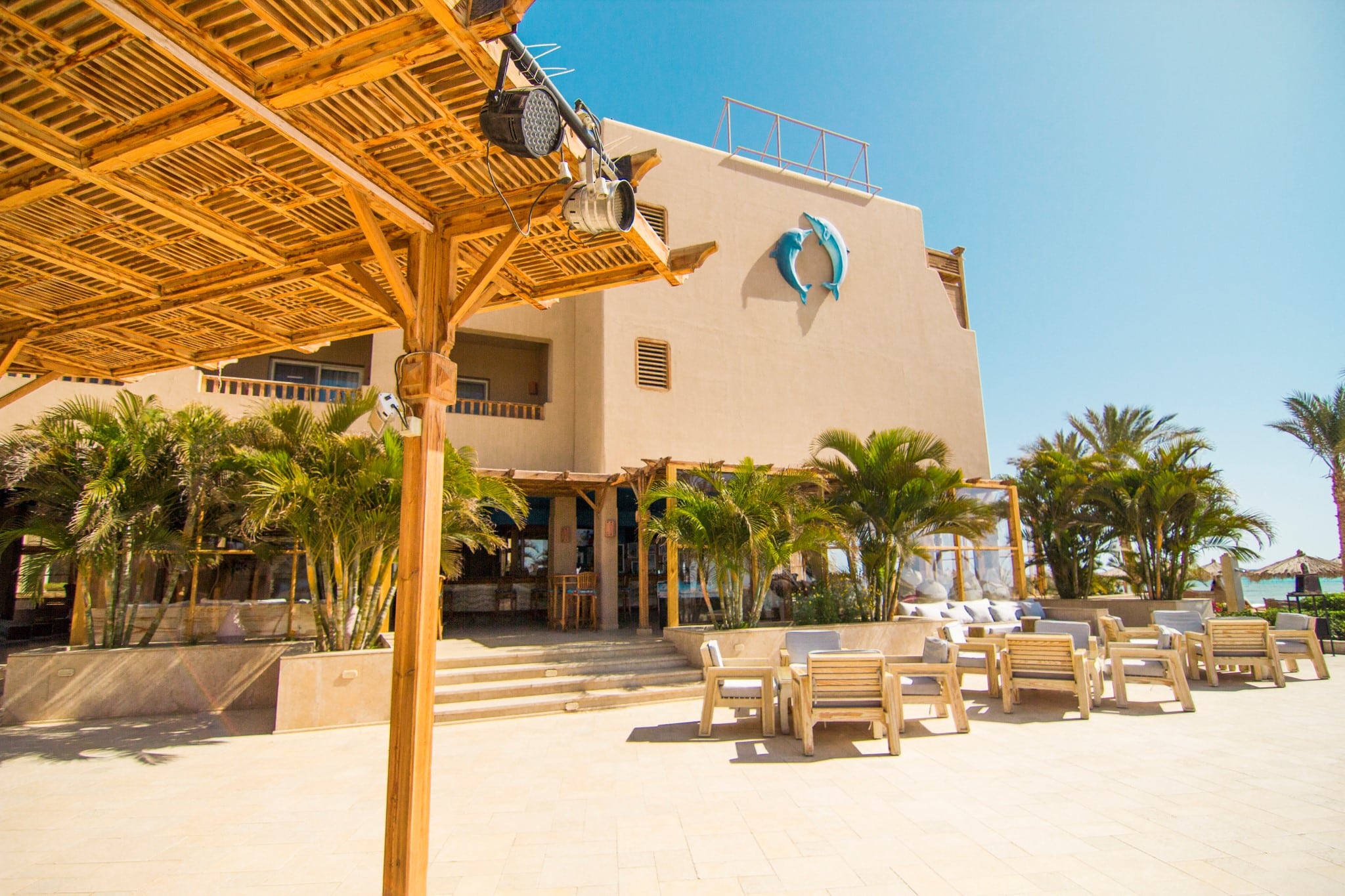
I took Easyjet from Bristol (UK) to Hurghada. Easyjet are not by any means my favourite airline but the flight was cheap and direct (except for the surprise extra £48 I was charged at the gate for my carry-on bag).
I was met at Hurghada airport by a driver and car and taken to the Breakers 28 miles (45Kilomaters) south along the coast. Once at the hotel I was too late for an evening meal and so a basic meal was delivered to my room. That and a beer from the fridge and I was fast asleep.
Early the next morning after breakfast I arrived for my rep meeting at the Orca Dive Center for 8.00am. I was immediately made to feel welcome, and after brief introductions I got some dive gear from the store, had a chat with my dive guide Mohamed and got ready to try the house reef situated at the end of a very long wooded pier where all diving gear and divers are taken out by buggies.
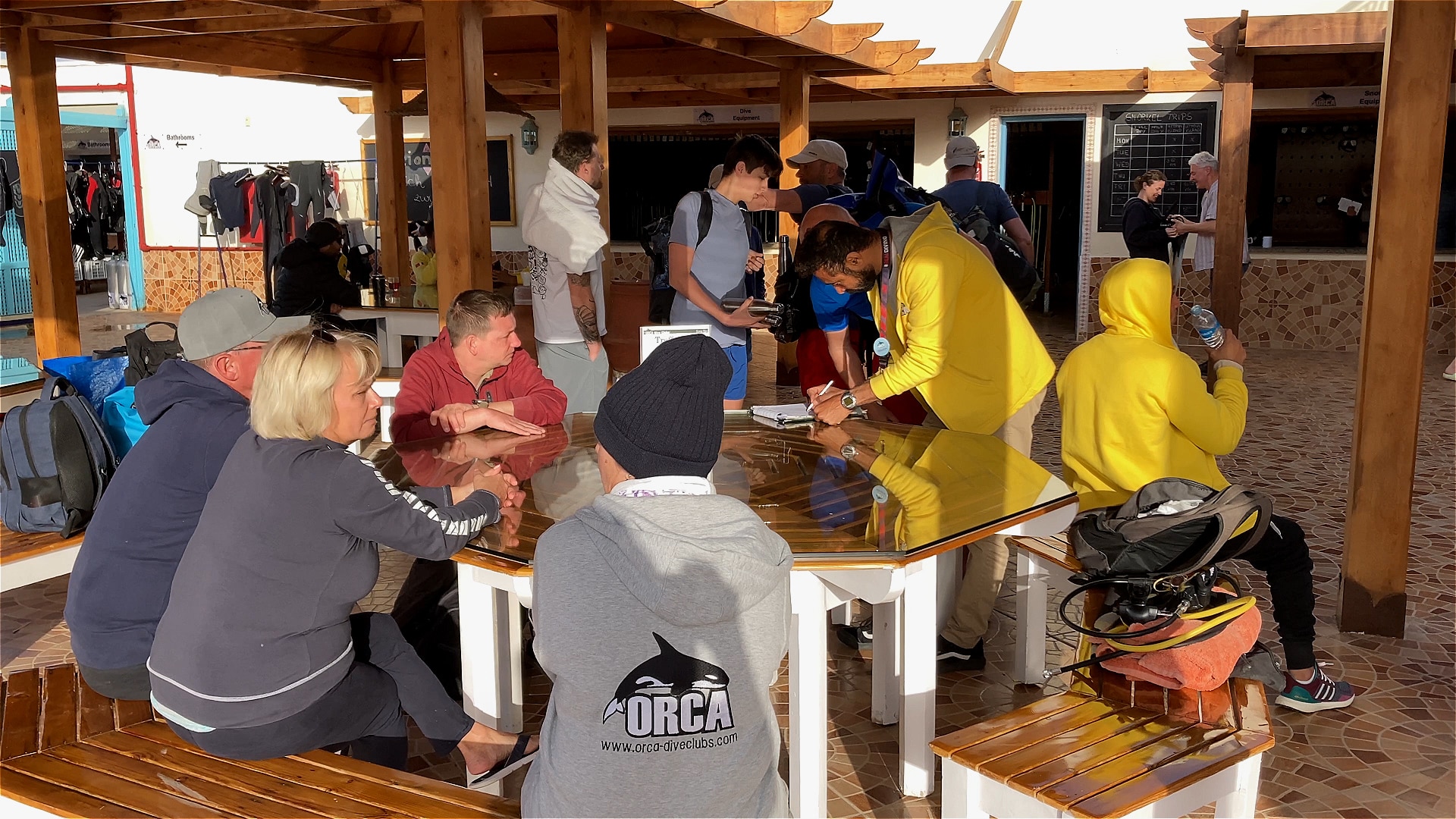
Once at the end of the pier, a helping hand from staff makes sure your gear is set and then it’s a short walk to the very end where you can either climb down a ladder of simply jump in the water next to the reef. The house reef extends both north and south giving a very easy and safe dive with plenty to see. At this time of the year the water temperature was a constant 22 degrees Centigrade and there was little or no current, so there were no issues in swimming back to the pier.
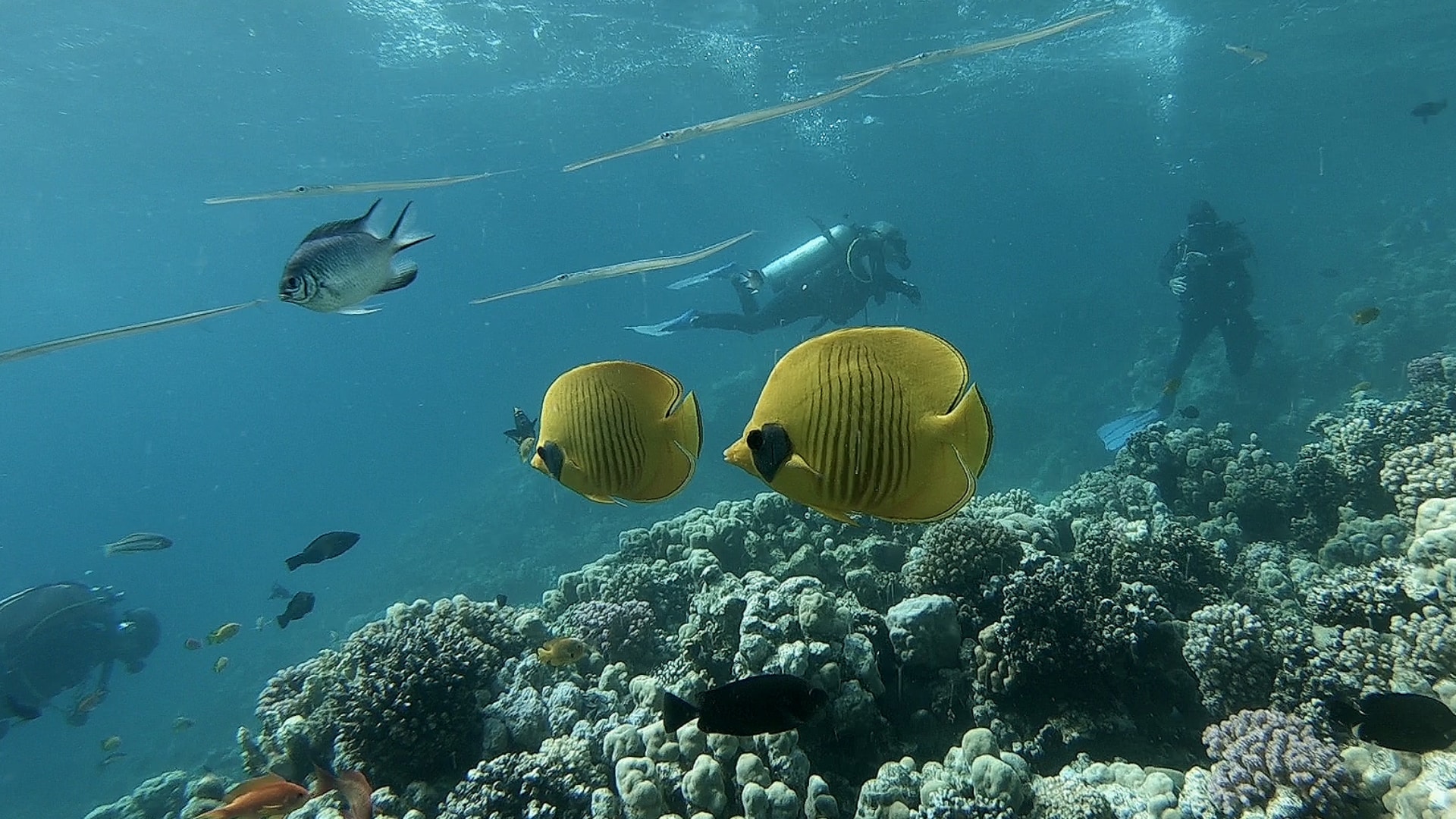
Quite a few divers were in dry or semi-dry suits, but being from the UK and used to the cold I found a 3mm wetsuit with a 3mm neoprene vest quite comfortable. Even after 50 years of diving I still find that first dive of a trip slightly nerving until I am actually underwater and then all becomes relaxed and I ease into auto diving mode. There was plenty to see with many of the Red Sea favourites along the way.
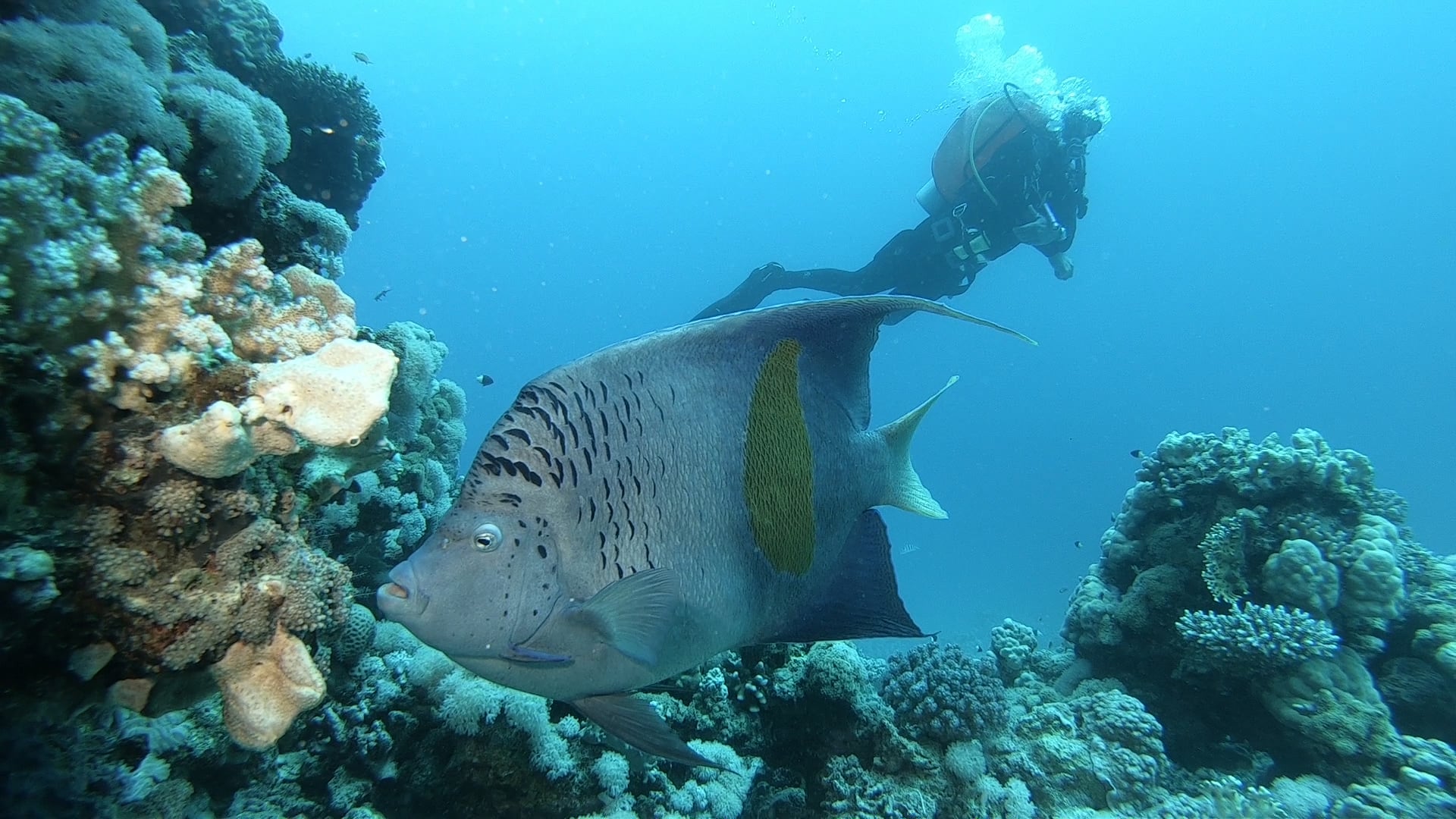
After the dive and a buggy ride back to the hotel for a very good buffet lunch I was back in the water, once again on the house reef for an afternoon dive.
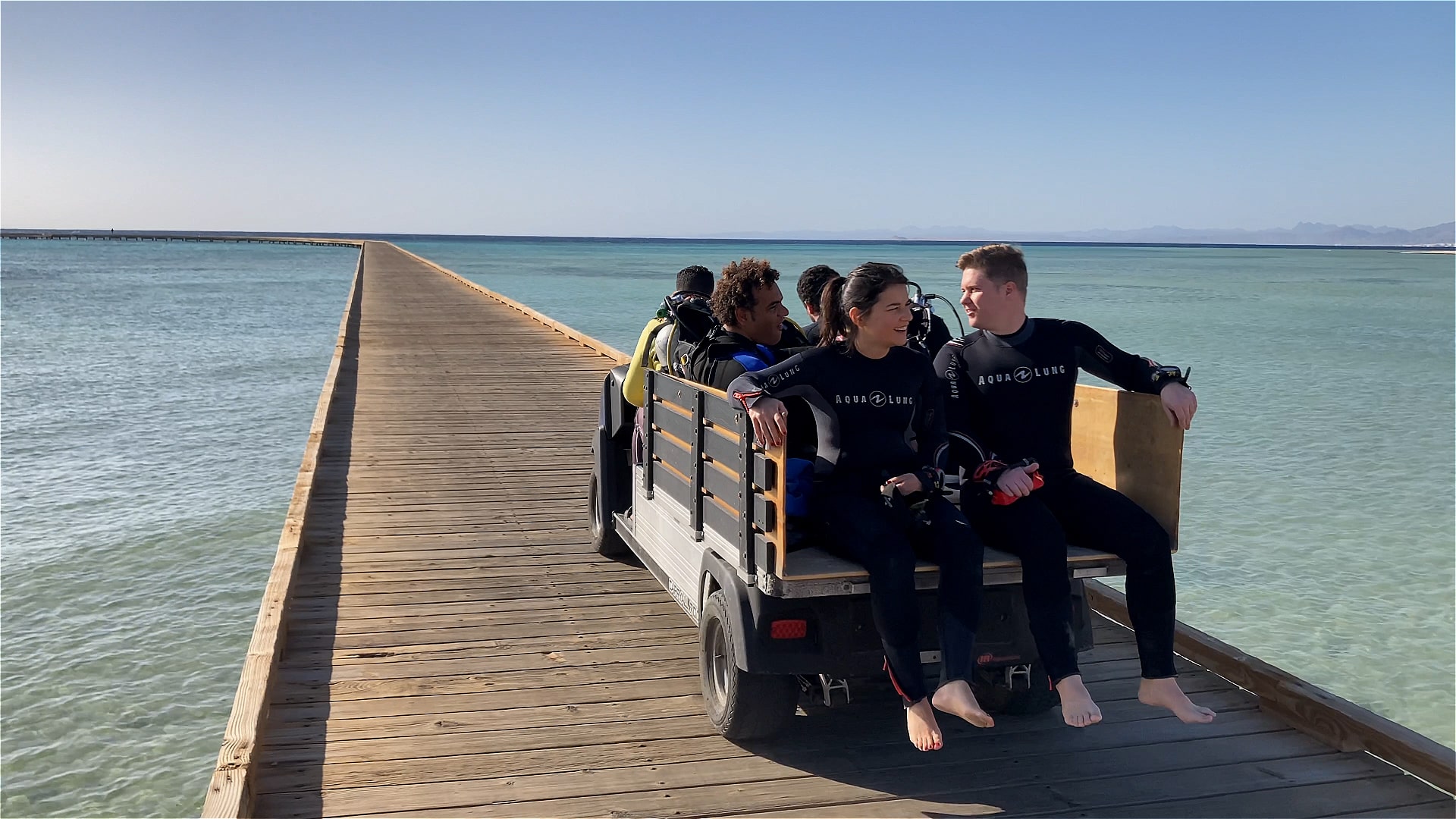
Check in for part 2 tomorrow when Jeff gets on a day boat and dives a few of the off-shore reefs.
Book your next Red Sea dive adventure with SOMABAY! For more information, visit www.somabay.com.
Stay at the Breakers Diving & Surfing Lodge when you visit! For more information, visit www.thebreakers-somabay.com.
Find out more about ORCA Dive Clubs at SOMABAY at www.orca-diveclubs.com/en/soma-bay-en.
Blogs
Jeremy Higson from Sea to Sky talks to Jeff Goodman about diving in Oman (Watch Video)
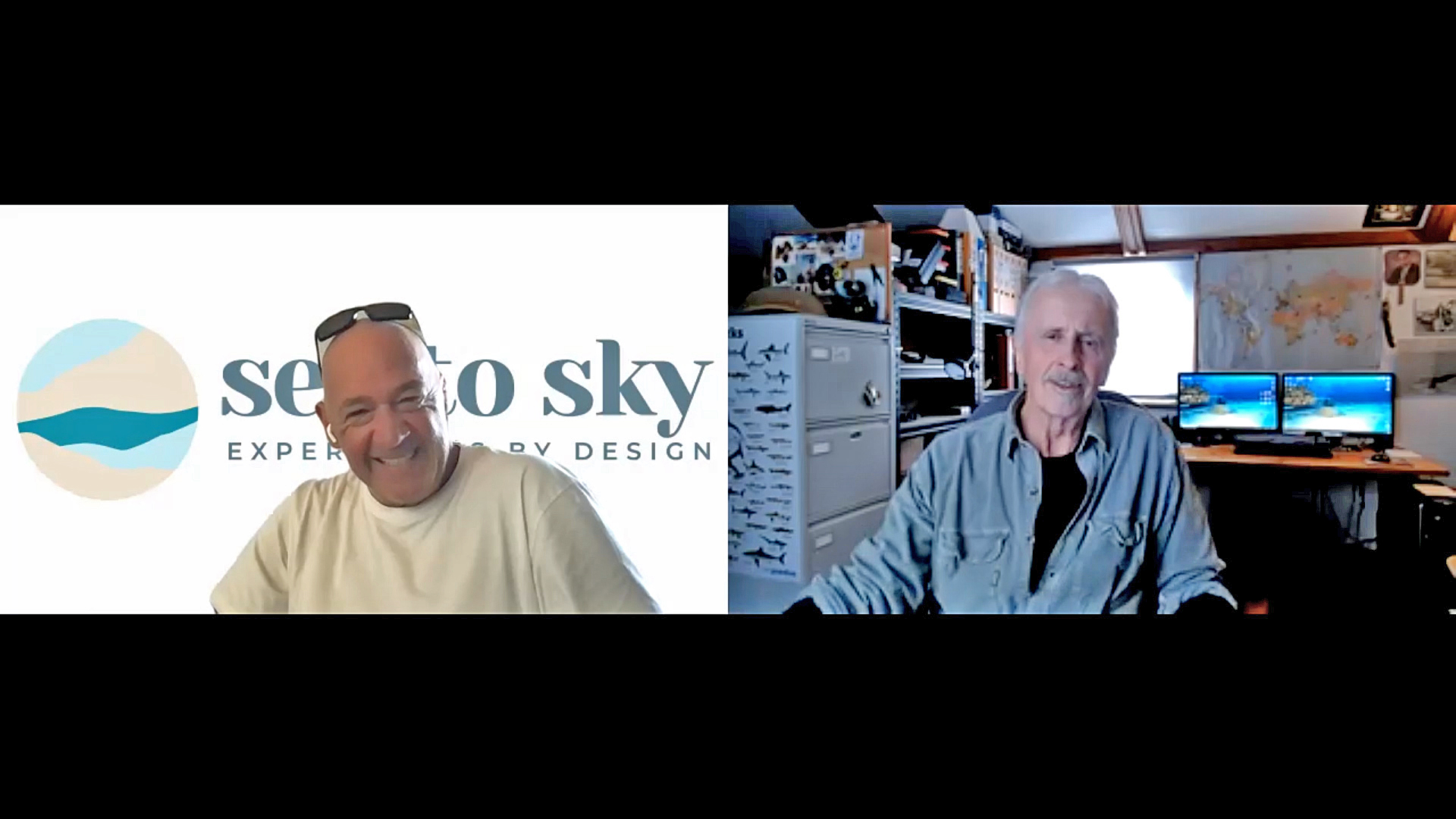
In an interview recorded exclusively for Scubaverse.com, Jeff Goodman interviews Jeremy Higson from Sea to Sky about the itineraries the tour operator offers in Oman.
For more information about diving in Oman, contact Sea to Sky now:
Email: hello@mysetaosky.co.uk
WhatsApp: + 39 379 236 7138
Website: www.myseatosky.co.uk
-

 News3 months ago
News3 months agoHone your underwater photography skills with Alphamarine Photography at Red Sea Diving Safari in March
-

 News2 months ago
News2 months agoCapturing Critters in Lembeh Underwater Photography Workshop 2024: Event Roundup
-

 Marine Life & Conservation Blogs2 months ago
Marine Life & Conservation Blogs2 months agoCreature Feature: Swell Sharks
-

 Blogs1 month ago
Blogs1 month agoMurex Resorts: Passport to Paradise!
-
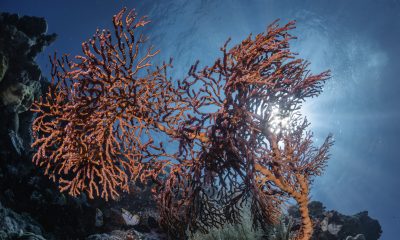
 News3 months ago
News3 months agoDive into Adventure with Photo Pro Paul Duxfield in North Sulawesi this October
-

 Gear News3 months ago
Gear News3 months agoBare X-Mission Drysuit: Ideal for Both Technical and Recreational Divers
-

 Gear Reviews2 months ago
Gear Reviews2 months agoGear Review: Oceanic+ Dive Housing for iPhone
-

 Blogs2 months ago
Blogs2 months agoDiver Discovering Whale Skeletons Beneath Ice Judged World’s Best Underwater Photograph


